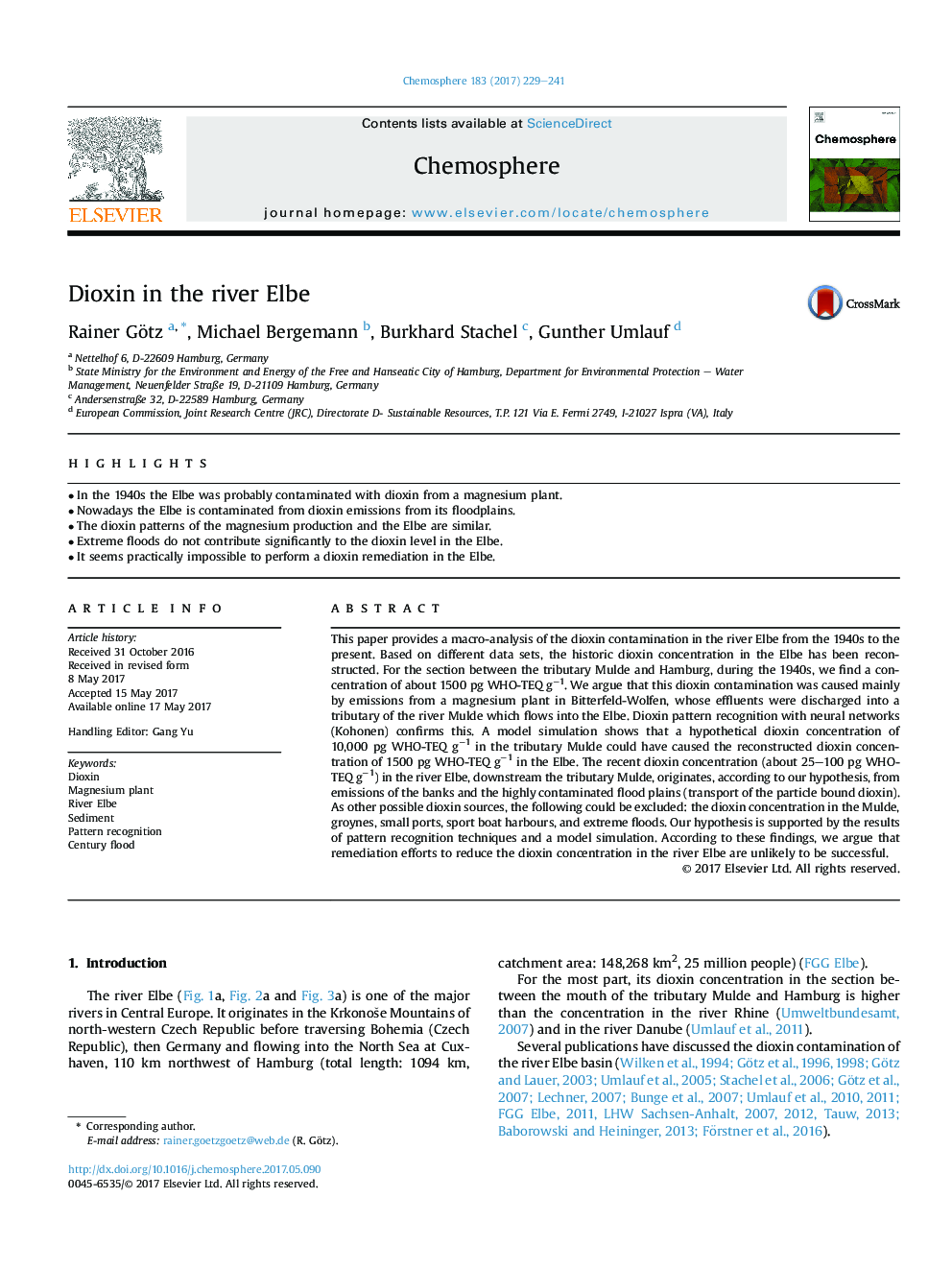| Article ID | Journal | Published Year | Pages | File Type |
|---|---|---|---|---|
| 5745949 | Chemosphere | 2017 | 13 Pages |
Abstract
This paper provides a macro-analysis of the dioxin contamination in the river Elbe from the 1940s to the present. Based on different data sets, the historic dioxin concentration in the Elbe has been reconstructed. For the section between the tributary Mulde and Hamburg, during the 1940s, we find a concentration of about 1500Â pg WHO-TEQ gâ1. We argue that this dioxin contamination was caused mainly by emissions from a magnesium plant in Bitterfeld-Wolfen, whose effluents were discharged into a tributary of the river Mulde which flows into the Elbe. Dioxin pattern recognition with neural networks (Kohonen) confirms this. A model simulation shows that a hypothetical dioxin concentration of 10,000Â pg WHO-TEQ gâ1 in the tributary Mulde could have caused the reconstructed dioxin concentration of 1500Â pg WHO-TEQ gâ1 in the Elbe. The recent dioxin concentration (about 25-100Â pg WHO-TEQ gâ1) in the river Elbe, downstream the tributary Mulde, originates, according to our hypothesis, from emissions of the banks and the highly contaminated flood plains (transport of the particle bound dioxin). As other possible dioxin sources, the following could be excluded: the dioxin concentration in the Mulde, groynes, small ports, sport boat harbours, and extreme floods. Our hypothesis is supported by the results of pattern recognition techniques and a model simulation. According to these findings, we argue that remediation efforts to reduce the dioxin concentration in the river Elbe are unlikely to be successful.
Related Topics
Life Sciences
Environmental Science
Environmental Chemistry
Authors
Rainer Götz, Michael Bergemann, Burkhard Stachel, Gunther Umlauf,
